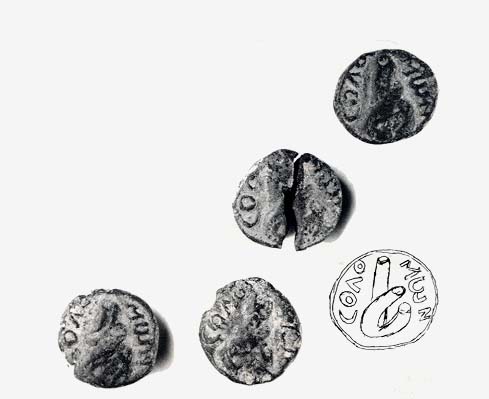Image Details

Photos by the British Museum/Drawings from Israel Exploration Journal
The name of Solomon, who ruled the United Monarchy of Judah and Israel in the tenth century B.C., appears on these two sets of eulogiai, or blessing tokens. Dating to the mid-sixth or early seventh century A.D., tokens such as these were carried by pilgrims in hopes they would provide good luck and protection. They come in two distinct styles. In Variant A, shown here, Solomon’s name starts on the lower left, wraps around the top and continues down the right side. In Variant B (see photograph), Solomon’s name starts at lower right, divides at top and continues down the left side. Both sets display unusual images, once thought to represent a figure or a Jerusalem hill. Scholar L.Y. Rahmani suggests, however, that—in keeping with the purpose of eulogiai—they are actually roots believed to possess curative powers. Rahmani studied the tokens at the British Museum, which purchased the unprovenanced collection from an antiquities dealer in 1973. Attitudes toward unprovenanced artifacts have changed greatly since then, however, with some in the profession even opposed to publishing items not found in professional excavations. Had these eulogiai come on the market today, the British Museum would likely not have purchased them and all we have learned from them would have been lost.
